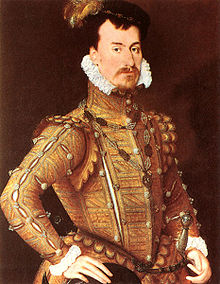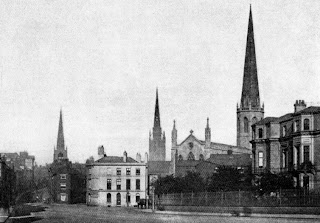Sunday, 1 April 2659 - Versailles, Paris, France
It’s time again for the Association of Temporal Anthropologist Annual Meeting and Ball. (For those of you who don’t remember last year’s explanation, here is a
link to that blog.)
This year the event is being held at the Palace of Versailles. We will all be staying at the fairly new Versailles Hotel across the street, but the meeting and the ball are held at the historic palace itself. The current French government (the 28th Republic) has pulled out all the stops, closing the building this weekend to the public.
 |
| Palace of Versailles |
I am one of the few Temporal Anthropologists who has actually visited the palace in the Field. By the Victorian Age the place had been turned into a museum, which is the only reason I was let in. No T.A. has been into this palace while it was a royal residence. Since Temporal Anthropologists aren’t allowed to make friends in the Field, we never have the connections needed to be invited as guests to royal courts. My interview with King Mongkut this month was one of those rare occasions a T.A. was even allowed to enter a royal residence, and I was hardly allowed to run about the place.
Dr. Matilda Warwick joked that perhaps a female T.A. could become the mistress of Louis XV, since he had so many no one, including Louis, would notice her. I pretended to be horrified that a woman who spends all her time in Medieval convents would even think of such a thing.
This weekend several Temporal Anthropologists have put on presentation, some with ideas of how to survive in the field, others just showing off their latest findings. (For instance, did you know Neanderthals had a great sense of humor and loved to sing?)
I gave a presentation on how to wile away lonely hours at night by making shadows on the wall by just using your hands. One problem is that every room is stuffed full of artwork. They put me in the Salon de Mars which has paintings on the walls and ceiling. Very distracting, even with the lights off. I’m not sure if anyone paid too much attention to me. (Of course, the last time I gave this presentation in a normal classroom, it went just as well.)
 |
| Salon de Mars |
The Palace of Versailles started as a hunting lodge built by Louis XIII in 1624. His son, Louis the XIV (better known as the Sun King) loved the place so much he expanded it into a grand palace and moved the court there in 1682. Now some historians think Louis XIV real purpose was to move the Royal Court away from the nobility in Paris and grab more control of the government for himself. (This was back before Paris swallowed Versailles, of course.) Unfortunately this move also distanced the king even more from the people, eventually leading to the French Revolution a century later and the beheading of his grandson.
After that the Palace of Versailles became the property of the new French Republic, and every other French Empire and Republic that followed. Let’s just say changes were made to the building from time to time and only stopped when some valiant art or history lovers fought to protect what remained. Even so, what does remain is jaw dropping.
The ball will be held in the Galerie des Glaces or Hall of Mirrors, perhaps one of the most famous rooms in the world. Built by Louis XIV, it is 239.5 feet by 34.4 feet by 40.4 feet. It got its name from the mirrors covering the walls, built at a time when even a hand mirror was very expensive. The Venetian Republic held a monopoly on mirror manufacturing, so Jean-Baptiste Colbert, the minister of finances, enticed several Venetian workers to come work for France.
 |
| Hall of Mirrors |
No one had ever installed such large mirrors in such quantity before. The mirror makers had to come up with new innovations. No one else in the world had a room like this, making Louis XIV the envy of all other monarchs of the day. Best of all, King Louis could admire himself everyday when he passed through the hall from his private apartment to the chapel.
I would like to say that having nearly a hundred Temporal Anthropologists in their very finest period attire would be the most opulent event to every be held here, but we aren’t even close. That distinction would probably go to the Siamese Embassy when they presented themselves to the Louis XIV in 1686. Ambassador Kosa Pan pulled out all the stops. King Narai of Siam not only wanted an alliance, he wanted to empress France. The exotic costumes and lavish gifts had the court buzzing for years.
 |
Siam Embassy in the Hall of Mirrors
(Note the mirrors in the back reflecting the windows) |
Well, I must get ready for the ball. I hope they play a couple of waltzes (my specialty, being Victorian.) I’m sure there will be a minuet in honor of King Louis XIV, Louis XV and Louis XVI. Hmm, wonder if they’ll play a tango?
Palace of Versailles homepage
Photos, videos, virtual tours
Make your own Hand Shadows
(Hours of fun if you are stuck by yourself in the Victorian Age)




























